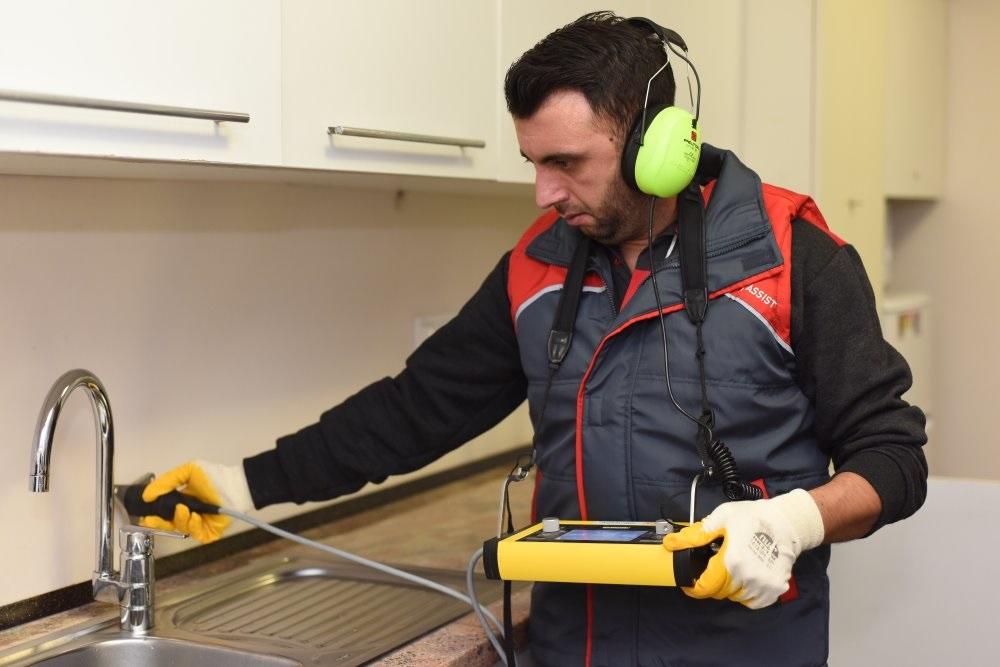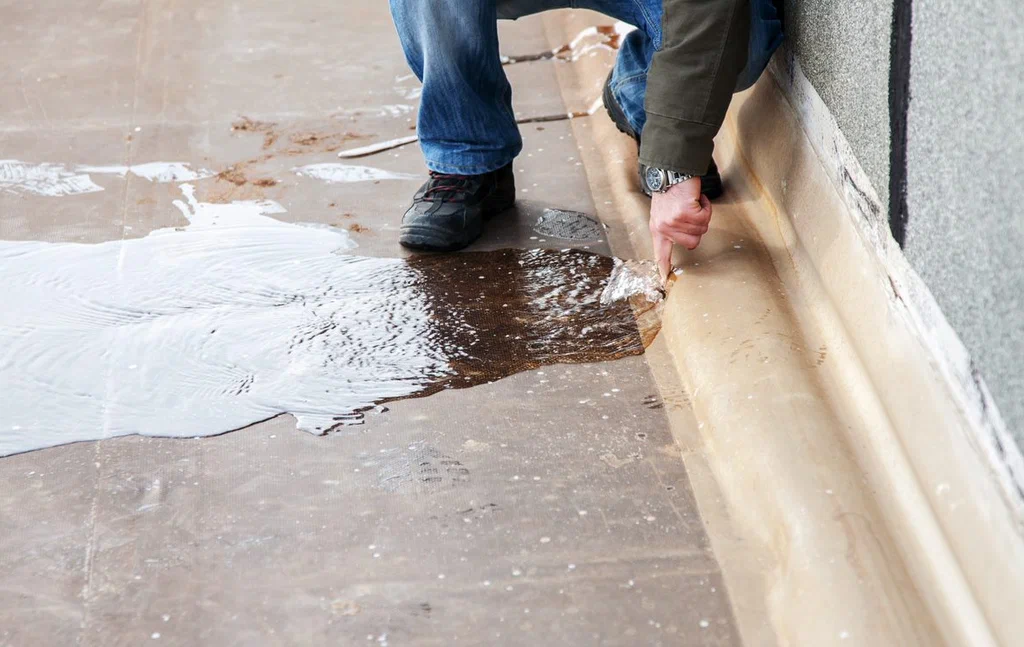When you discover a leak beneath your home’s concrete foundation, the words slab leak can quickly turn into a homeowner’s nightmare. Whether it’s water pooling on your floors, a sudden spike in your water bill, or the sound of running water when no taps are on, a slab leak is a problem that demands immediate attention. But here’s the bigger question: which slab leak repair method is right for your home?
At Leak Experts USA, we have helped countless homeowners across the valley choose the best repair solution for their unique situation. Our certified technicians use advanced diagnostics to pinpoint the leak and guide you toward a method that’s effective, minimally invasive, and built to last.
This guide will walk you through the most common slab leak repair methods, their pros and cons, and how to make the smartest choice for your home’s plumbing health.
📞 Have a slab leak emergency? Call (702) 745-5571 today for a fast, expert inspection.
Table of Contents
- Understanding Slab Leaks
- How Slab Leaks Are Diagnosed
- Common Slab Leak Repair Methods
- Pipe Rerouting: When and Why It Works
- Direct Access Repair: Pros and Cons
- Epoxy Coating: A Trenchless Alternative
- Cost Factors for Slab Leak Repair
- Choosing the Best Method for Your Home
- FAQs About Slab Leak Repair
Understanding Slab Leaks
A slab leak occurs when a water line running beneath your home’s concrete foundation develops a crack, hole, or corrosion spot. Because these pipes are buried under concrete, even a small leak can cause major problems before it’s detected.
Common causes include:
- Corrosion: Older copper pipes are prone to corrosion, especially in homes with hard water.
- Abrasion: Pipes rubbing against concrete or gravel can wear down over time.
- Poor installation: If pipes were kinked, bent, or poorly insulated during construction, leaks are more likely.
- Shifting soil: Expansive or moving soil puts pressure on pipes, leading to breaks.
Left untreated, a slab leak can cause structural damage, mold growth, and skyrocketing water bills.

How Slab Leaks Are Diagnosed
Before discussing repair options, accurate diagnosis is key. We use advanced leak detection technology to locate the exact source of the problem without unnecessary demolition. This often includes:
- Acoustic listening devices to detect water movement.
- Thermal imaging cameras to find hot or cold spots.
- Moisture meters to pinpoint water accumulation.
By identifying the exact location and extent of the damage, we can recommend the most effective is a slab leak repair method—saving you time, money, and stress.
Common Slab Leak Repair Methods
While every home is different, the most widely used methods include:
- Pipe Rerouting – Replacing the affected pipe section by running a new line through walls or ceilings, bypassing the slab entirely.
- Direct Access Repair – Excavating through the slab to repair or replace the damaged section of pipe.
- Epoxy Coating – Applying a protective lining inside the pipe to seal leaks from within, often using trenchless technology.
Each method has its place, and the right choice depends on the pipe’s location, the severity of the damage, and your long-term plumbing goals.
Pipe Rerouting: When and Why It Works
Pipe rerouting is often the preferred solution for older homes or when multiple leaks are expected in the future. Instead of repairing the damaged pipe under the slab, a new pipe is installed above ground—usually through the attic, walls, or crawl spaces.
✅ Advantages
- Avoids breaking through concrete.
- Prevents future slab leaks by eliminating under-slab pipes.
- Faster completion time compared to direct excavation.
- Ideal for homes with multiple leak points.
❌ Disadvantages
- May require wall openings for new pipe paths.
- Can be more expensive if multiple reroutes are needed.
Best For: Homes with aging plumbing, multiple slab leaks, or high risk of recurrence.
Direct Access Repair: Pros and Cons
Direct access repair is the most traditional method, involving breaking through the slab at the leak location to expose and fix the damaged section of pipe.
✅ Advantages
- Repairs only the damaged section, preserving the rest of the system.
- Lower initial cost compared to full reroutes.
- Quick fix if the leak is in an easily accessible spot.
❌ Disadvantages
- Requires jackhammering, creating noise, dust, and disruption.
- May weaken the foundation if done repeatedly.
- Does not address future leak risks in other under-slab pipes.
Best For: Isolated leaks in newer homes with otherwise healthy plumbing.
Epoxy Coating: A Trenchless Alternative
When minimal disruption is a priority, epoxy coating offers a modern, trenchless solution. A liquid epoxy resin is applied inside the existing pipe, sealing leaks and preventing future corrosion.
✅ Advantages
- No digging or breaking concrete.
- Extends the lifespan of older pipes.
- Restores water pressure by sealing micro-leaks.
❌ Disadvantages
- Not suitable for severely collapsed or crushed pipes.
- May reduce pipe diameter slightly.
- Requires professional application for lasting results.
Best For: Minor leaks in pipes that are otherwise structurally sound.

Cost Factors for Slab Leak Repair
The price of slab leak repair options varies depending on:
- Method chosen (rerouting, direct access repair, or epoxy coating).
- Pipe material (copper, PEX, galvanized steel).
- Extent of damage and accessibility.
- Additional repairs like flooring replacement.
Average costs can range from $1,500 for a small direct repair to $7,500+ for full pipe rerouting. Epoxy coating often falls in between.
We provide upfront, transparent estimates—so you know exactly what to expect before work begins.
Choosing Best Method for Your Home
When deciding between pipe rerouting, direct access repair, or epoxy coating, consider these factors:
- Home age: Older homes often benefit from rerouting to avoid future slab leaks.
- Leak location: Accessible leaks may be repaired directly.
- Budget: Direct access is often the cheapest short-term fix, but rerouting may save money long-term.
- Future plans: If you plan to remodel soon, coordinate repairs with other work to minimize disruption.
Our team serves neighborhoods from Southern Highlands to Sunrise Manor, offering tailored slab leak repair solutions for every type of home.
FAQs About Slab Leak Repair
Q1: How do I know if I have a slab leak?
Look for unexplained water bills, damp spots on floors, reduced water pressure, or the sound of running water when taps are off.
Q2: Is pipe rerouting better than direct repair?
It depends on the situation—rerouting avoids under-slab pipes entirely, reducing future risk, while direct repair is a targeted fix for isolated leaks.
Q3: How long does epoxy coating last?
With proper application, epoxy-coated pipes can last 20+ years, protecting against leaks and corrosion.
Q4: Can I prevent slab leaks?
While you can’t prevent all leaks, regular plumbing inspections and water pressure regulation can reduce the risk.
Your Home Deserves the Right Slab Leak Repair
Whether you choose pipe rerouting, direct access repair, or epoxy coating, the key is making an informed decision based on your home’s unique needs. At Leak Experts USA, we combine advanced technology with decades of local experience to deliver fast, reliable, and lasting signs of a slab leak solutions.
We proudly serve Las Vegas and surrounding communities, including Summerlin, North Las Vegas, Paradise, and more. From emergency leak detection to full-system repiping, we’re your go-to partner for protecting your home’s foundation and plumbing.
📞 Call us today at (702) 745-5571 or book online to schedule your inspection. The sooner you act, the more you save—and the better you protect your home. Follow us on Instagram for regular updates!

